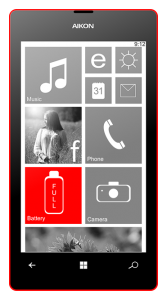Enterprise Mobile App Development : Dallas Fort Worth Metroplex
Optimized Battery Life Applications
Smartphone users across all platforms indulge in gaming when away from their consoles, PCs, or hand held systems. For mobile gaming applications, there is a trend that denotes the ability for gameplay to either be indulged for hours and hours with little effect on battery life, or drain battery life within the hour. As a result, a never-ending stream of blogs about tips and tricks to extend your smartphone’s battery life have been released and got us thinking about what causes battery life to drain on some apps but not on others.
We came to the conclusion that an application developer can consider ways to conserve battery life in both native and web application development. Back in the beginning of web development in the 90’s, web developers had to manage their approaches with respect to the speeds of various modems available to enterprises and consumers. Innovations and best practices were put into place in order to keep end users from waiting too long for a web site to load. Utilizing compressed images allowed content and backgrounds to load faster since they could be stored at a high quality in small sizes. With the introduction of DSL and Coax, those speed issues dissipated and became a thing of the past.

Today’s developers can create best practices and implement similar innovations to ensure that their end users do not have to take actions, aside from purchasing applications instead of downloading free versions, which cuts ad-servers out of the battery-consumption picture, on their part to conserve battery life on their respective devices in order to use mobile apps. Through continued use, battery drain is inevitable, however here are some things for designers and developers to consider:
- Color Schemes: Brighter lighter shades of colors require more light, and more battery, to output to the screen while darker tints of colors take less light and thus less energy to display.
- Image Compression: As in times past, the designers should try to use .jpg images and innovations with CSS to reduce download times in place of larger .png files that have become a standard file type in recent years.
- Data Transfer: This is the largest consideration as any sort of data transfer or communication with an external server uses processing power and network resources, both of which demand battery consumption. Developers have enjoyed the use of AJAX calls, which allows the developer update a portion of a webpage without reloading the entire webpage giving an interactive feel to a page, but with each call the device has to communicate with an external source. These calls are constantly sending and receiving information before rendering it to the screen, demanding battery consumption.
There is nothing to mitigate the battery life loss when utilizing data transfer functionality of mobile applications, but developers can take care to consider how often data needs to transfer and send information to its centralized database. Third-party ad-servers constantly relay GPS chipset information-a huge battery hog-and other target data offered through applications to send ads to your phone. If there are no changes to the data being transferred, does a developer even need to transmit the data, or is the receiving application or third-party ad-server smart enough to use the last transmitted values?
Lithium-Ion batteries that are implemented into these smartphones are meant to handle casual wear, lasting from three to five years before they need to be replaced, but it is ultimately up to software developers to consider battery life consumption through continued use of their developed applications and optimize a solution that allows the end-users to not have to charge their device more often than the battery needs to, they can choose to be Pro-Battery-Life.

